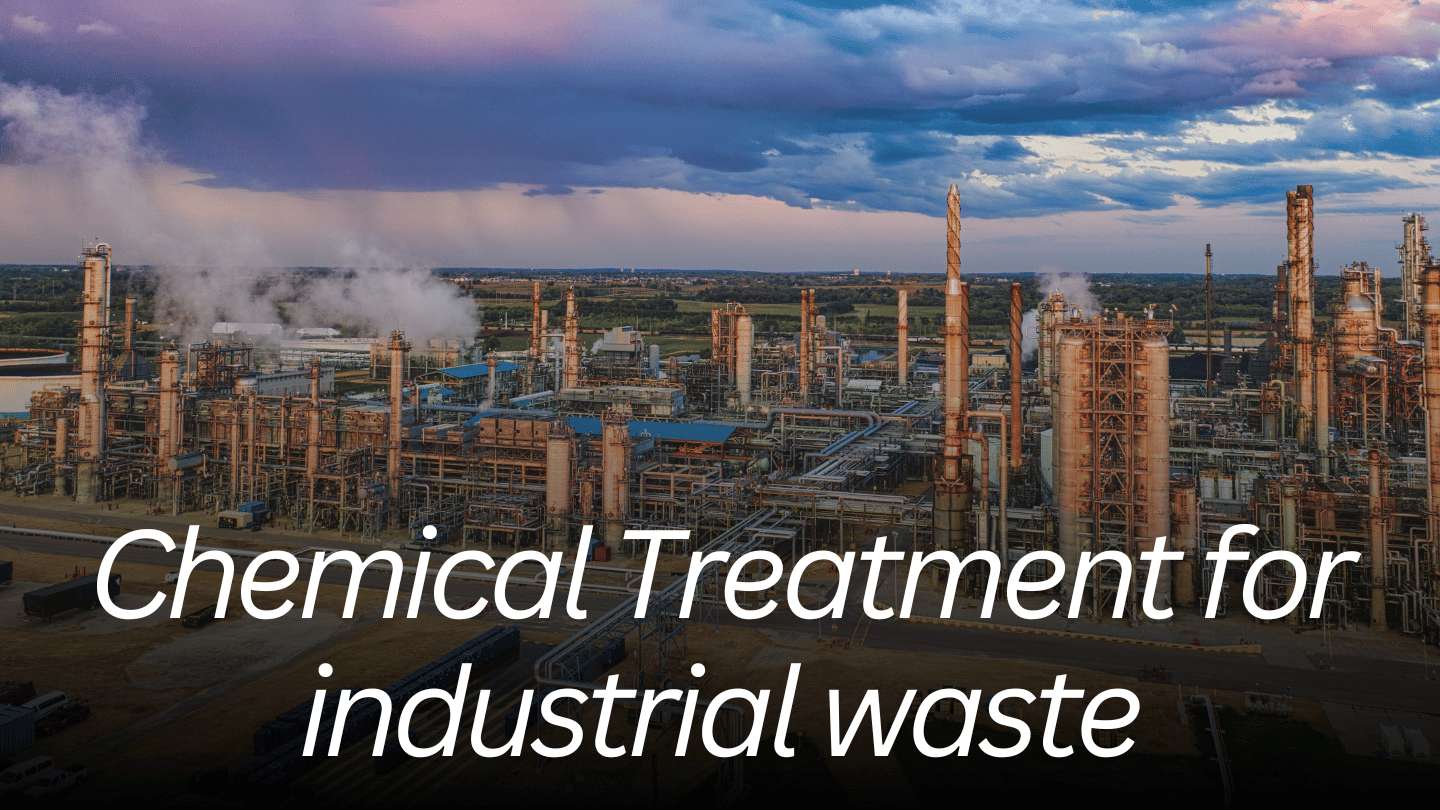Technologies and Advancements in Hazardous Waste Water Treatment Technologies
The landscape of industrial wastewater therapy is undergoing a transformative change, driven by technologies that enhance both effectiveness and sustainability. As regulatory standards progress, the assimilation of AI and machine learning into wastewater management systems promises to guarantee and simplify operations conformity.
Summary of Drainage Treatment Technologies
Wastewater therapy innovations encompass a range of techniques created to remove impurities from commercial effluents before their release into the setting. These technologies are important for keeping environmental balance and guaranteeing compliance with environmental policies. The key groups of wastewater treatment include physical, chemical, and biological methods, each serving distinctive purposes based upon the nature of the pollutants existing.

Organic treatment approaches utilize microbes to deteriorate raw material, making them specifically reliable for organic-rich effluents. Techniques like turned on sludge and biofilm activators harness the natural destruction abilities of microorganisms, leading to significant decreases in biochemical oxygen demand (BOD)
Advanced Filtration Strategies
Advanced filtration strategies represent a critical development in the realm of commercial wastewater therapy, boosting the efficiency of contaminant elimination procedures. Industrial Waste Water Treatment. These methods include a series of modern technologies, including microfiltration, ultrafiltration, nanofiltration, and reverse osmosis, which provide consecutive barriers for various fragment sizes and chemical frameworks
Microfiltration and ultrafiltration make use of membrane layer systems to eliminate suspended solids, germs, and bigger natural molecules, enhancing the high quality of effluent prior to additional therapy. Nanofiltration links the void between ultrafiltration and turn around osmosis, successfully removing natural compounds and divalent ions, thus lowering the load on downstream procedures.
Reverse osmosis uses the highest degree of filtration by enabling only water and small molecules to travel through its semi-permeable membranes, making it suitable for recovering high-grade water from industrial effluents. Current developments in membrane technology, consisting of the advancement of even more fouling-resistant and durable materials, have substantially boosted operational effectiveness and reduced expenses.
Incorporating these sophisticated purification methods not only improves the total therapy procedure however likewise adds to sustainability efforts by allowing water reuse and resource healing in commercial settings. (Industrial Waste Water Treatment)
Biological Therapy Developments

In addition, the advancement resource of crafted biological systems, such as membrane layer bioreactors (MBRs), incorporates organic treatment with sophisticated membrane purification. This assimilation permits for higher effluent high quality and lowered impact, making it ideal for space-constrained industrial facilities. Technologies in genetically engineered microbes have actually additionally arised, enhancing the biodegradation of certain contaminants, such as pharmaceuticals and hefty metals, that are traditionally challenging to eliminate.
Furthermore, the execution of bioaugmentation strategies, where valuable microorganisms are presented to boost the existing organic therapy procedures, has revealed appealing results in enhancing therapy efficiency. These innovations jointly represent a pattern towards even more sustainable and effective biological treatment approaches that can adjust to the progressing complexities of commercial wastewater streams. As markets remain to focus on ecological compliance, these biological innovations will play an important role in wastewater administration.

Resource Recuperation Approaches
In industrial setups, the combination of resource recuperation techniques has actually become increasingly important for boosting sustainability and lessening waste. These techniques concentrate on drawing out beneficial materials and power from wastewater streams, therefore changing potential toxins right into reusable resources.
One popular method is vitamins and mineral recuperation, where nitrogen and phosphorus, frequently existing over in wastewater, are caught and converted into fertilizers. This not only reduces environmental impacts yet also offers a circular economy service for agricultural applications. In addition, innovations such as anaerobic digestion permit for the conversion of natural waste right into biogas, a renewable resource source that can balance find more info out nonrenewable fuel source use in commercial operations.
Moreover, progressed filtration and membrane technologies assist in the recuperation of commercial spin-offs such as salts and metals. These recovered materials can be reintegrated right into production processes, decreasing the need for virgin sources.
Future Trends in Waste Water Monitoring
As industries increasingly prioritize sustainability, the future of wastewater monitoring is established to undergo substantial transformations. Technical developments, such as expert system and device learning, will certainly enable more reliable surveillance and monitoring of wastewater systems. These technologies can forecast maintenance requirements, enhance treatment procedures, and improve decision-making, eventually lowering operational prices and ecological effect.
In addition, the combination of round economy concepts will certainly play a crucial duty in wastewater management. Industries are anticipated to change towards systems that not just deal with wastewater yet likewise recoup beneficial sources, such as nutrients, water, and power. This transition will lessen waste and promote the reuse of products, straightening with international sustainability goals.
Arising treatment techniques, such as membrane layer bioreactors and progressed oxidation processes, will certainly additionally improve the effectiveness of wastewater treatment, allowing for better effluents suitable for reuse. In addition, regulatory structures are likely to progress, stressing more stringent requirements for wastewater discharge and encouraging markets to embrace ingenious therapy remedies.
Conclusion
In verdict, the evolution of industrial wastewater treatment technologies demonstrates a considerable shift towards improved performance and sustainability (Industrial Waste Water Treatment). Technologies in advanced purification strategies, organic treatments, and resource recuperation approaches highlight the market's dedication to environmental stewardship.
The landscape of commercial wastewater treatment is going through a transformative change, driven by advancements that boost both efficiency and sustainability.Wastewater therapy technologies include a variety of methods made to get rid of impurities from industrial effluents prior to their launch right into the environment.Taking advantage of the power of organic processes has actually led to considerable developments in the therapy of industrial wastewater.In addition, the implementation of Web Site bioaugmentation strategies, where helpful germs are introduced to enhance the existing biological treatment procedures, has actually revealed encouraging outcomes in boosting therapy performance. These developments jointly represent a fad in the direction of more sustainable and reliable organic treatment techniques that can adapt to the evolving complexities of industrial wastewater streams.